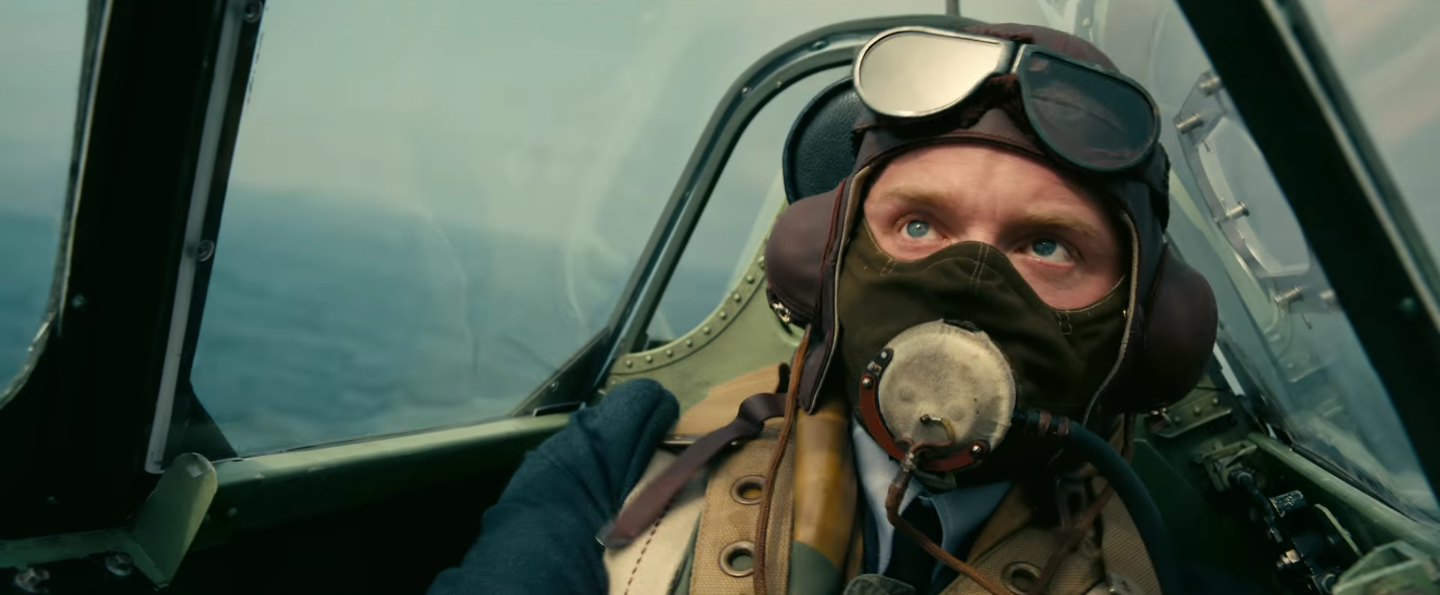
British officers size up the dreadful situation of their stranded army in DUNKIRK.
Dunkirk is the true story of how in the middle of World War II British forces found themselves stranded and pinned on the beaches of France. 400,000 men trembled as German forces picked them off the sand from the air, as officers scrambled to load as many soldiers onto naval destroyers with minimal success. When word of the plight reached English soil, many took up the call for assistance in variety of ways.
Christopher Nolan’s (The Dark Knight Trilogy, Inception) account of the historical military event is a unique blend of three interwoven narratives, using the element of time for distinct perspectives. The first perspective is land—the unfolding of the horror from the young experienced maroon knaves desperate for escape. The second is sea—the civilian boaters who use their tiny to mid-sized vessels to attempt a rescue. And finally air—the pilots given one hour of fuel and tasked with protecting those below from enemy dive bombers.

What works in Dunkirk are the palpable action sequences, and the immersive audial experience. Nolan once again proves himself a master auteur of framing and executing complex, and intense, visual shots. While it would have proven easier to rely on computer-generated imagery to portray bombastic explosions and sinking battleships, Nolan painstakingly employs real sets and intimate camera positioning to put audiences in the soldiers’, pilots’ and captains’ boots. The result is breathless exhilaration.
This encounter, however, would be incomplete if not for the masterful work by composer Hans Zimmer and the entire sound department. Zimmer incorporates the ticking of Nolan’s personal stopwatch in order to convey a sense of dread—an inevitable countdown to despair without hope. Long string movements cut through silence like piercing alarm raid sirens. The sounds of sand involuntarily ascending via propulsion are both a relief that the bombs missed their mark, and a reminder of the stark reality that is the damning terrain working against the militia.

While Nolan’s execution of his project (he is credited as sole writer and director) is skillful in terms of capturing a unique experience, the wispy script is both blessing and curse. None of the characters in Dunkirk are ever given any backstory to speak of, making them somewhat difficult to connect with. For example, Mark Rylance plays a Mr. Dawson. Dawson is a man who has a son and a resolute conviction to help with the evacuation. Beyond that his, motivations are unclear and feels more like a plot device than a person. The same could be said for Tom Hardy’s Farrier, a courageous pilot who is great to root for, but the audience never gets to know. And finally, the three soldiers doing everything they can to return home (including lies and deceit) blend together too easily. This is likely intentional with Nolan choosing to focus on events rather than dialogue, but one can’t wonder if a bit more insight into the human psyche about the events as they unfolded would have fostered a more emotional response.
Nolan has publicly stated that Dunkirk is his most experimental film to date, and this is an absolute correct assertion. The interwoven arcs misaligned through the perception of time is a novel and intriguing way to present the events as they unfold. Unfortunately, the disjointed nature of the cuts while sewn together as best as possible may feel jarring and confusing to some audiences. One should applaud Nolan for taking a bit of an editing risk, but be aware it does demand rapt attention from those watching. This becomes more difficult as one realizes that the pace and intensity of the film never lets up over the course of it 106 min runtime. The result is a rather draining experience—which some may find rewarding, while others merely feel taxed.
Dunkirk is mandatory viewing for those who appreciate historical military dramas. For those who are less enthused by the subject or genre, Dunkirk may feel less engaging and more like an endurance challenge.
Grade: A-
Photos courtesy of Warner Brothers Pictures